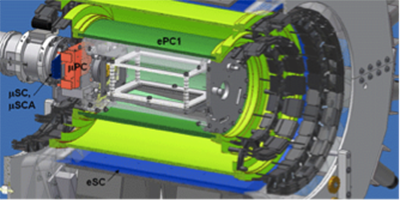Sizing Up Quark Interactions
Even though the radioactive decay of nuclei is mainly driven by the weak force, interactions between the quarks that make up the protons and neutrons in the nucleus can also affect the process. Calculating these effects with quantum chromodynamics (QCD), the theory describing the strong force interactions between quarks, is, however, mathematically cumbersome at the low energies associated with the nucleus. Instead, calculations are more tractable using an effective QCD theory, in which interactions are between bound quarks (mesons, protons and neutrons). Now, researchers running the muon capture (MuCap) experiment at the Paul Scherrer Institute in Switzerland have confirmed a long-standing prediction of the theory, known as chiral perturbation theory, boosting confidence that it can be used to accurately describe quark interactions in simple nuclei.
Muon capture is like a beta-decay process run in reverse: a muon (a particle with the same charge as an electron, but 200 times the mass) interacts with a proton to produce a neutron and a neutrino. Among other factors, a dimensionless quantity called the “pseudoscalar coupling,” determines the rate of the reaction.
Chiral perturbation theory says the coupling factor has a value of , without a lot of wiggle room. But experimental data going back to the 1960s have shown the coupling could be anywhere between and . The MuCap collaboration, which measures the rate of the muon capture process by stopping a beam of muons in a low-density gas of pure hydrogen, has analyzed 30 terabytes of data to extract the pseudoscalar coupling with unprecedented precision. The value of their result, reported in Physical Review Letters, is —in excellent agreement with the theoretical prediction. – Jessica Thomas





